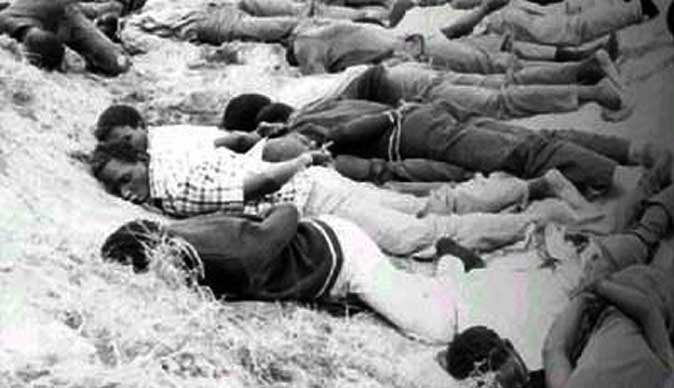
By NQOBANI NDLOVU
FORMER Zimbabwe People’s Revolutionary (Zipra) fighter Esau Ncube has sensationally claimed that his Zimbabwe African National Liberation Army (Zanla) counterparts were poorly trained so much so that they could not take up positions of authority in the army at independence.
Zipra and Zanla were Zapu and Zanu’s armed wings during the liberation struggle.
Ncube made the claims in his newly-published book titled Robert Mugabe KCB: Black Supremacist.
According to the book, former Central Intelligence Organisation (CIO) director-general Happyton Bonyongwe was appointed as commander of 2:3 Battalion in Mutoko “not on merit”, but to avoid a situation where 2 Brigade battalion commanders came from Zipra.
The book traces 19th century King Mzilikazi and his people’s settlement in Matabeleland, through the colonisation of Mashonaland in 1890, the destruction and occupation of the Ndebele State in 1893 by the British South African Company, before examining the politics of African nationalism by Zapu and Zanu in the quest for black majority rule.
It also offers insights into the late former President Robert Mugabe’s tumultuous rise to power and his resolve to stay in power at all cost while also reflecting on the 1980’s Gukurahundi massacres that claimed over 20 000 civilians’ lives in Midlands and Matabeleland.
“The government was embarrassed by the spectre of having to appoint mostly ex-Zipras as battalion commanders. For example, Smile Madubeko (Zipra) was appointed commander of 2:1 Infantry Battalion in Mt Darwin and Todd Mpala (Zipra) became commander of the 2:2 Battalion in Mudzi. Before they could appoint another Zipra commander, they had to save Zanla the embarrassment,” the author said.
- Chamisa under fire over US$120K donation
- Mavhunga puts DeMbare into Chibuku quarterfinals
- Pension funds bet on Cabora Bassa oilfields
- Councils defy govt fire tender directive
Keep Reading
“A compromise was reached and Bonyongwe was appointed commander of 2:3 Battalion in Mutoko, but not necessarily on merit. Had they not done that, the three 2 Brigade battalions would have been commanded by former Zipra soldiers.”
To also save face, a number of Zanla ex-combatants had to be sent for further training, the author added.
“The government had to accept that Zanla was in need of further training if they had to be at par with Zipra. To make up for that glaringly discomposing deficiency in military acumen, 60 Zanla officer cadets were sent for counter training in Nigeria.
“One of the trainees was Mike Nyambuya, who later became Minister of Energy and Governor of Manicaland province (interview with retired Col Lazarus Ray Ncube, Harare 2010),” the book added.
“The practice of appointing battalion commanders on merit was quickly abandoned because it could have resulted in an entirely Zipra command structure. By early 1981, commanders were being appointed politically and the structure fast became mostly Zanla. The concept of maintaining a balance of the armies was furtively discarded.”











